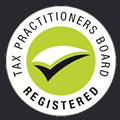18 October 2023
Personal deductible contributions can allow individuals to claim a tax deduction for contributions they have made to superannuation provided they meet certain requirements. So what are these requirements and what should you look out for?
Eligibility requirements
You will be eligible to claim a deduction for your personal superannuation contributions if:
- You meet the aged based rules
- Your taxable income is more than the amount you want to claim as a deduction (ie, your deduction can’t give you a tax loss)
- You make the contribution to a complying superannuation fund
- You give a special notice to your fund telling the trustee how much you want to claim
- You give your fund that notice within strict timeframes
- Your fund sends you an acknowledgement confirming your notice has been received and is valid
You must meet all of the above criteria otherwise you won’t be eligible to claim a deduction for your contributions.
Continue reading “Are you eligible to make a personal deductible superannuation contribution?”




